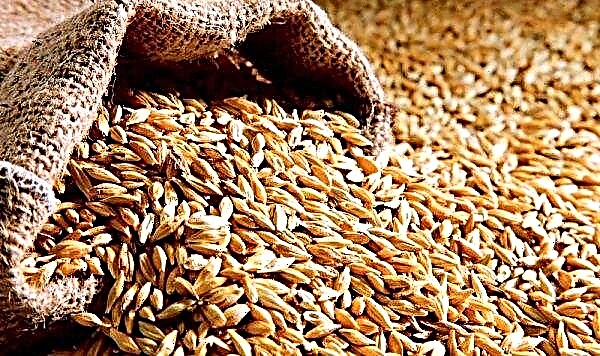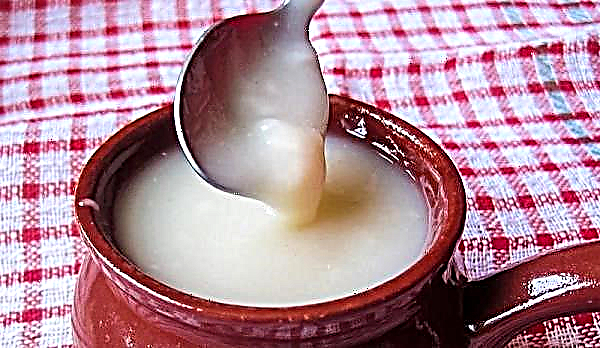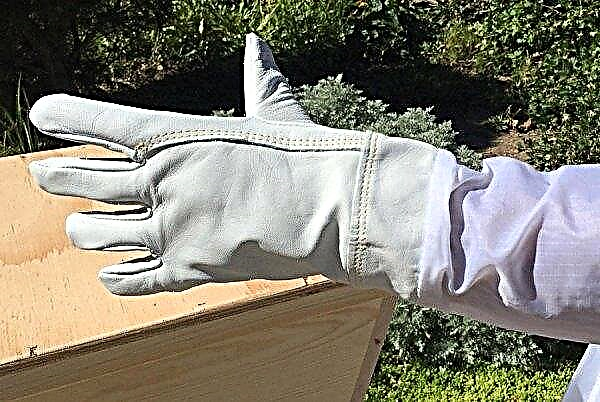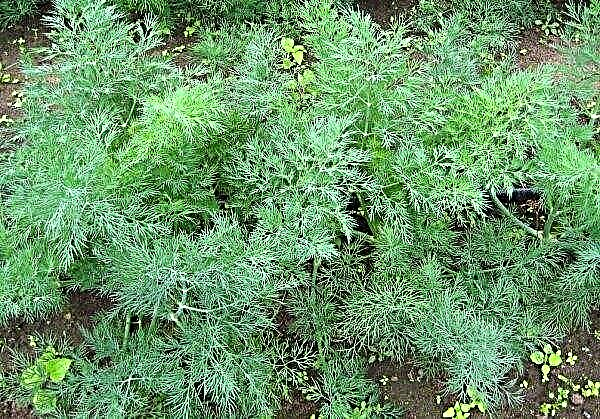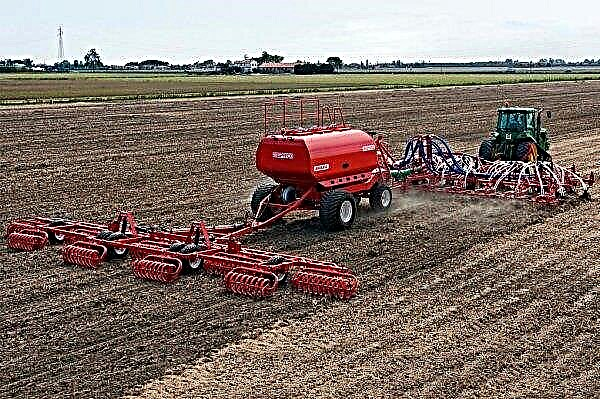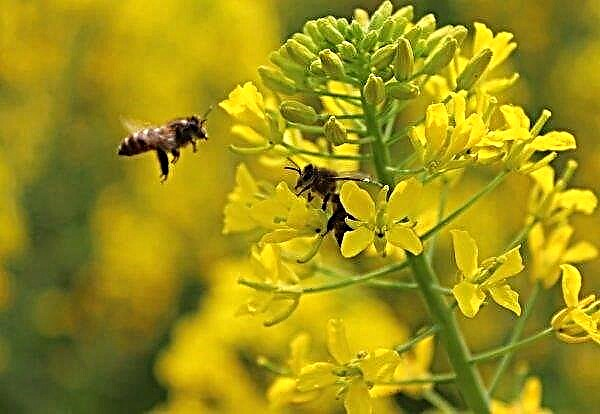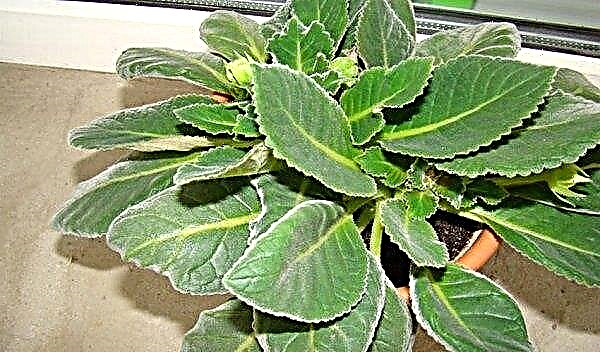The cultivation of tomatoes always brings a summer resident a lot of problems, this culture is quite whimsical, so it lends itself only to not many. Particularly acute is the problem for gardeners from the temperate and northern climatic zones, so they often opt for unpretentious and cold-resistant varieties, one of which is the Lakomka hybrid. This article will provide a detailed description of the variety, as well as its main advantages and disadvantages.
Grade description
Gourmet tomato is an early highly productive variety for universal use. Its fruits are distinguished by increased taste, marketability and production characteristics, so they can be used quite widely. The plant is a small compact bush up to 60 cm long. This makes it possible to successfully grow it both in open soil and in greenhouses.
Despite the compactness of the bush, the stem of the tomato is quite strong and thick. Often it is erect, but under the mass of fruits it can almost completely lie down. Several lateral branches are formed on it, covered with large leaves, dissected into several parts. The color of the leaves is saturated, bright green tones.
Flowering on tomato is observed amicably, the first inflorescences appear after the eighth leaf, and subsequently grow every 1-2 tiers. Inflorescences form small nests. The flowers are often small, not more than 1 cm in diameter. Their shade is mainly yellow or pale yellow. The plant is considered to be ripe, the duration of the vegetation period of Gourmand is on average from 80 to 100 days.
The fruits of this tomato are regular round in shape, slightly flattened in the horizontal direction, saturated red-raspberry color. They have a rather tender flesh, with a characteristic tomato aroma and a sweetish flavor. The peel is quite thin, almost not felt. A huge amount of small seeds of light brown color is observed in the pulp. The fruits are arranged on the bush evenly, singly or in small groups. The average mass of the fruit is in the range of 120 g, while the yield of plantations can reach up to 8 kg / m².
Often, many summer residents in various forums ask what percentage of sugar can be contained in the pulp of Gourmand. This characteristic is one of the main features of the variety, since it has a noticeable sweetish flavor. In this case, the percentage of mono- and disaccharides can be about 3% of the total mass of the crop.Did you know? Ancient Aztec tribes were the first to mass cultivate tomatoes, in addition to food purposes, the plant was actively used by Indians to treat a wide range of diseases.
Advantages and disadvantages
- The main advantages of the variety:
- high productivity;
- unpretentiousness;
- drought tolerance;
- the versatility of the fruit;
- excellent taste of the crop;
- the fruits are perfectly tied even in adverse weather conditions;
- increased immunity against characteristic infections of the culture.
- The disadvantages of Gourmands include the following features:
- fruit seeds are unsuitable for further plant growth;
- the fruits are not suitable for whole preservation;
- during heat treatment, the peel instantly loses its integrity;
- plantings require frequent top dressing, without this, crop productivity decreases sharply.
Self-growing seedlings
Often, when cultivating Gourmands, even beginner gardeners have no problems, this hybrid is so unpretentious that you can get a high-quality crop even on the windowsill. However, all those who planted the plant at least once argue that for this you need to correctly and timely grow quality seedlings. Without this, the tomato will hurt for a long time, and its yield will not exceed a few kilograms.

Sowing dates
Since the hybrid is characterized by sufficiently short ripening periods, sowing seeds for seedlings begins 60 days before the planting of young plants in open soil. In the temperate zone, the optimal period for this occurs in the first half of April; in other climatic zones, the time is counted individually.
At the same time, tomatoes must form 6–7 leaves before planting, and at the time of planting, the street should have a stable temperature with an average daily minimum of about + 15 ° С. When planting in a greenhouse or on a windowsill, seedlings are grown in the middle or second half of March.
Did you know? With periodic use, tomatoes are able to improve mood and emotional state. This happens due to specific substances, the so-called serotonins, which are considered a natural source of the “hormone of happiness”.
The soil
The best soil for growing sprouts is a moderately loose and fertile mixture. It is prepared from equal parts of peat, river sand and sod land. Soil is prepared for planting since the fall, since it needs at least several months in order for the mixture to create a full interaction between the individual components.
1–2 weeks before planting seeds, soil sterilization is carried out, this will help protect young plants from damage by fungi and small pests.
Do this with:
- roasting the mixture in the oven (at 130 ° C for 20–25 minutes);
- freezing in a freezer (at –20 ° C for about 2-3 days);
- warming in the microwave (for 5-10 minutes);
- wetting with a 2% solution of potassium permanganate.

Capacity for growing
Absolutely any garden containers are suitable for growing seedlings - both common containers and individual glasses. The minimum size of the container for one plant should be 5 × 10 cm. Moreover, such vessels should necessarily be quite wide, since the roots of tomatoes tend to form a branched root system of the fibrous type. The main condition when choosing containers for growing is their inertness and resistance to aggressive substances of the substrate.
To save time and labor, seedlings are grown on so-called peat tablets. They are compacted soil, saturated with all useful substances. Several seeds are sown on each tablet, after which they are placed in common containers. Despite its nutritional value and effectiveness, the main disadvantage of tablets is the need to pick young tomatoes, which is almost always fraught with a long acclimatization period for plants.

Seed preparation
To ensure the germination of seedlings and the excellent growth of seeds, they must be specially prepared. First, the seeds must be disinfected, for this they are soaked in 2% potassium permanganate (15–20 minutes) or 70% alcohol (5–10 minutes).
After this, the seed must be soaked in a growth stimulator, for this purpose, Kornevin, Zircon, Epin-Extra or Sodium Humate preparations are used. Replace chemical mixtures with aloe juice. For this, the liquid 1: 1 is diluted with clean water, and the soaking is extended to 24 hours. After the seeds in the liquid slightly swell, they can be successfully sown in the soil.
Important! The concentration of growth stimulants should be selected strictly on the basis of the manufacturer's recommendations; their excess can cause chemical burns and the death of seed.
Sowing seeds
Sowing seeds is carried out in two ways, row and hole method. Row-row is used in case of growing seedlings in common containers. To do this, rows are evenly distributed over the entire territory of the tank in increments of 3-4 cm. Seeds are sown in them so that the distance between adjacent seeds is within 1-2 cm.
Individual holes are placed at a distance of about 3 cm, 2-3 seeds are placed in each of them, of which only one, the most viable sprout is left in the future. Regardless of the planting pattern, the depth of the seed of the tomato seed should be within 1 cm.

Seedling Care
Sown containers are well moistened, covered with a dome made of polyethylene or glass, and then placed in a warm, well-lit place. The south or southwest windowsill is best suited for this. Before removing the dome, the plants are provided with a temperature regime of about + 25 ° C, after the first shoots appear and 2-3 leaves are formed on them, the protective dome is removed. Since that time, during the day, the temperature is maintained within +18 ... + 20 ° С, at night it is about + 15 ° С, otherwise seedlings will stretch.
Proper lighting is the main requirement of tomatoes. For good seedling growth, daylight hours of about 16 hours are required, therefore, the sprouts necessarily need additional illumination. Tomatoes are not less demanding for watering, the first time the containers are moistened no more than 1 time per week, after 3-4 leaves appear on the sprouts, the procedure is repeated every 4 days. For irrigation use only well-defended, clean water, with a temperature of +18 ... + 20 ° C, bring moisture under the root in small portions.
In order to achieve active growth and development of tomatoes, they must be fed. The first time this is done approximately 2 weeks after the appearance of the first shoots, then the procedure is repeated another 2-3 times with an interval of 3-4 weeks.For feeding, the following mixtures are used:
- a solution of 1 l of water, 4 g of superphosphate, 1.5 g of potassium salt, 0.5 g of urea;
- a mixture of a liter of water, 0.7 g of ammonium nitrate, 3 g of superphosphate, 2 g of potassium sulfate;
- infusion of 2 liters of boiling water and 1 tbsp. l chopped wood ash (the liquid is infused for about 3-4 days).
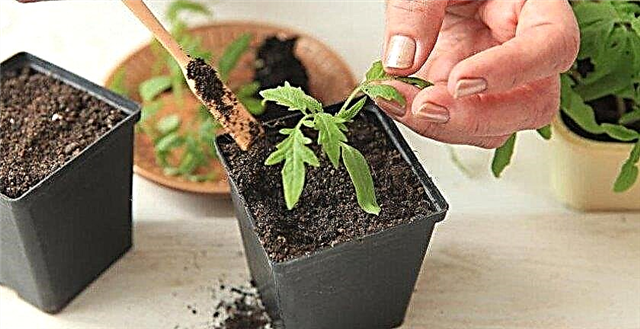
Seedling hardening
Hardening is carried out approximately a week before transplanting seedlings into open soil, by this time at least 40–45 days should have passed after the first seedlings appear, and about 6–7 true leaves should form on the plants. This procedure is quite important, it best helps to prepare tomatoes for environmental variability, as well as activate the immune system of seedlings.
The procedure is carried out by transferring plants to low temperature conditions. Tomatoes are kept in the cold in the open air, unheated balcony or veranda. First, the procedure is carried out for several tens of minutes, after which for 4-5 days the duration of this period is increased to 16 hours.
At the same time, for overnight plants are transferred back to the heated room. The last 2-3 days before planting in a permanent soil, the containers with seedlings are completely transferred to open air, after which the tomatoes become fully prepared for planting in the open.Important! During hardening, the temperature should not be reduced below + 12 ° C, otherwise the plants will get hypothermia and die.
Planting seedlings in a permanent place
Dive tomatoes to a permanent place is carried out the next day after a full hardening. By this time, about 6–7 leaves should grow on the plants, and their age should be about 55–60 days after the appearance of the first seedlings. At the same time, a stable thaw with a temperature minimum of about + 15 ° C should form on the bed. The most suitable time for this in the temperate zone is considered to be the middle - the end of May. Tomatoes are planted in individual holes, creating the correct rows. The depth of each of them should be about 30 cm, and the diameter should not exceed 25–30 cm. The planting pattern of a tomato is 60 × 60 or 70 × 40 cm, thus, about 6–8 plants should be located on 1 m².
Tomatoes are planted in individual holes, creating the correct rows. The depth of each of them should be about 30 cm, and the diameter should not exceed 25–30 cm. The planting pattern of a tomato is 60 × 60 or 70 × 40 cm, thus, about 6–8 plants should be located on 1 m².
Features of outdoor care
Variety Gourmand requires standard measures for the care and cultivation, they provide for timely hydration of the beds, as well as top dressing. Particular attention should be paid to the application of fertilizers, only this measure will make it possible to get a full-fledged high-quality crop, characterized by a reference taste and marketable qualities.
Did you know? Humanity is grateful to the Russian agronomist Andrei Bolotov for the appearance of tomatoes in the middle lane. It was he who, in the second half of the 18th century, invented the seedling method of growing crops, which made it possible to obtain tomatoes even in cold climates.
Watering
Tomatoes are watered sparingly, the crop responds best to moderate hydration, but a short drought for the bushes is also not harmful. Often, watering is carried out no more than 1 time per week, however, during the rainy season, the multiplicity of the procedure is halved.
It is not difficult to identify the need for irrigation. The need of plants for moisture occurs as soon as a small dry crust appears on the ground. Watering under the root is carried out directly in the trunk ring. Irrigating foliage of tomatoes is prohibited, as this can trigger the appearance of fungi.

Fertilizer application
Gourmand needs regular feeding, after a dive to a permanent place, the plant requires at least 3 fertilizers. It is best to fertilize the beds every 2-3 weeks, up to the green ripening phase of the fruit, which will positively affect the yield of plantings and the plant as a whole. Any mixtures based on phosphorus compounds are used for this.
Nitrogen fertilizers for feeding tomatoes are prohibited, they cause an active increase in green mass, which often negatively affects the fruiting of the crop. Replace chemicals with a solution of chicken droppings (1:15), which no less than meets the needs of plants in the necessary substances.
Stitching and tying the bush
Garter bush for Gourmand is a mandatory measure, otherwise, under the weight of the fruit, the plant may be damaged and die. Spend it after rooting seedlings, already 2-3 weeks after planting in a permanent place. To do this, install metal rods or wooden pegs about 1 m long at a distance of 10 cm from the trunk of the bushes. After that, the bushes are tied with dense twine, while the garter should be in the center or slightly above the middle of the trunk, and the garter should not be constrained tomato growth.
As the growth of tomatoes is carried out and pinching bushes. This procedure makes it possible to avoid the growth of infertile shoots, which improves the nutrition of fruits, and with this their weight and taste. Often a bush is formed into 1 stalk, but also formation options in 2–3 stems are also possible. To do this, remove all unwanted branches on the bush, leaving only the most productive.
As the bush grows, all stepsons developing from the sinus of the leaves are removed. It is most safe to remove young stepsons up to 4 cm long, otherwise the procedure can cause inhibition of bush growth. Also, the first tier of leaves, as well as all the foliage shading the fruits, is also subject to pruning. This measure helps to accelerate the ripening of fruits and reduce the vegetative period of tomatoes by 7-10 days.
Important! Any manipulations with beds are best done in the evening. Only at this time the most optimal microclimate for plant restoration is observed, as well as the chances of overdrying the soil mixture are reduced.
Soil care
A high-quality system for caring for soil occupied by tomato beds provides for timely loosening, weeding, mulching and hilling of bushes. Weeding and loosening are often combined, the procedure is carried out no more than 1 time per week, the day after watering the soil. These procedures are needed in order to saturate the soil with oxygen, which is important for the roots, and also to destroy the smallest manifestations of weeds on the site. Since the root system of tomatoes is located in the upper part of the substrate, the soil is loosened to a shallow depth. For the first time it is weeded deep into 10–12 cm, and then no more than 5–7 cm.
Approximately 2-3 weeks after transplanting, seedlings can be spudded. This will help create the optimal microclimate in the soil and protect it from drying out. The second time the plantations are spudded about a month after transplanting. For the procedure I use moist soil between rows, while around each bush it is necessary to create a small annular recess, which during watering will retain moisture around the tomatoes.
Hilling can be replaced by mulching, it is also carried out 2-3 weeks after rooting seedlings, and then, if necessary. As mulch, peat, humus, wood bark or tyrsu are used. Mulch is poured after watering with a layer of 7-10 cm.
You will be interested to read about other determinant varieties of tomatoes:
Gourmet is a high-yielding and rather unpretentious variety of tomatoes, characterized by excellent production and taste characteristics. It is often not difficult to grow this variety, so even novice growers successfully grow it right on the windowsill. However, to get a really rich harvest, a lot of attention should be paid to the culture, especially during the period of formation and filling of the fruits. Without this good tomato crop, it will be hard to achieve.
Network user reviews
ADVANTAGES: Can be grown at home
DISADVANTAGES: Requires care
I was even surprised that I met my favorite tomato on the site. The fact is that I have my own winter garden, and one day I decided to leave several bushes of Gourmand tomato at home, since it is not very tall. We left 5 bushes, planted them in ordinary buckets. They bore joy to the whole family. Everyone was happy to wait for their tomato to ripen. The children simply shared them, this is mine, and this is yours. Tomatoes not only bore fruit in the summer, but throughout the fall, there were no tomatoes for the winter, but the bushes did not wilt, they stood all winter, apparently rested ... And in March they gave fresh shoots and began to bloom and bore fruit again, though the harvest was a little less .




